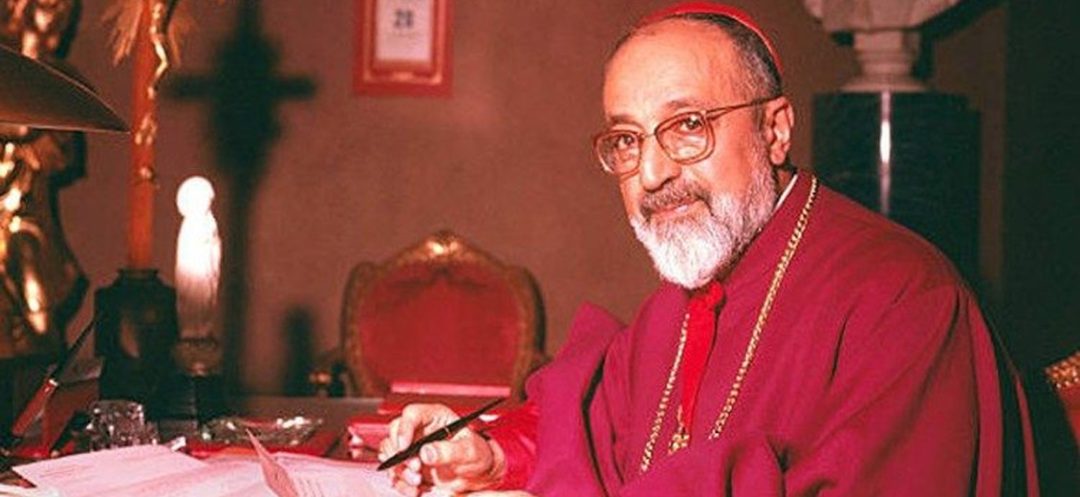On Thursday, September 12, Beirut’s Martyrs’ Square was the backdrop for a touching ceremony as the Armenian Catholic Patriarchate honored the arrival of the remains of Cardinal and Patriarch Gregory Peter XV Agagianian.
The revered cardinal’s journey from Rome concluded with his body being laid to rest in the Armenian Catholic Cathedral of St. Elias and St. Gregory the Illuminator, situated in downtown Beirut.
A Symbol of Unity
The procession saw Agagianian’s remains transported in a glass casket, carried with great respect by twelve young Lebanese men from diverse religious backgrounds.
This act was a powerful symbol of interfaith unity and cooperation.
The ceremony was marked by the Armenian scouts’ band playing as attendees reached out to touch the casket, seeking blessings.
In keeping with Middle Eastern tradition, rice and rose petals were thrown onto the casket to celebrate and honor the arrival.
Reflections from Leaders
The event was graced by various political and religious figures.
The current Armenian Catholic Patriarch, Raphaël Bedros XXI Minassian, delivered a moving speech emphasizing unity and solidarity among different denominations.
He remarked that the carrying of the casket by young men from various faiths symbolized the true spirit of Lebanese unity.
Maronite Patriarch Cardinal Bechara Boutros al-Rahi also spoke, affirming that Agagianian’s resting place would be in the Armenian Catholic Cathedral.
He expressed hope that the cardinal’s incorruptible state would aid in his beatification process and congratulated all churches and the Lebanese community on this significant occasion.
Bishop Krikor Badishah of the patriarchal Diocese of Beirut highlighted the importance of the event, noting how Martyrs’ Square had transformed into a national symbol of unity and hope for Lebanon.
The ceremony was further enriched by a performance from singer Layal Nehmé Matar, accompanied by the Lebanese army’s band, adding a layer of reverence and solemnity.
The Beatification Process
The path to beatifying Agagianian began under the guidance of former Armenian Catholic Patriarch Krikor Bedros XX Ghabroyan and gained momentum with the current patriarch’s request to open Agagianian’s tomb.
The discovery of his apparently incorrupt body sparked interest in his potential canonization, though incorruptibility alone isn’t a definitive indicator of sainthood.
The formal beatification process was initiated in Rome on October 28, 2022, involving a thorough review of Agagianian’s life, virtues, and any attributed miracles.
Legacy of Patriarch Agagianian
Agagianian was known for his deep spirituality and commitment to justice, particularly for the marginalized.
His devotion extended to the Virgin Mary, the Sacred Heart of Jesus, and the Eucharist.
Throughout his career, he made significant contributions to the Church, including serving as a cardinal, heading the Sacred Congregation for the Propagation of the Faith, and participating in the Second Vatican Council.
Agagianian’s Ties to Lebanon
Although of Georgian-Armenian descent, Agagianian became a Lebanese citizen after arriving in Lebanon in 1935.
He was deeply involved in Lebanese society, working to bridge political divides and fostering relationships across various sectors.
His efforts in reconciling figures like Maronite Patriarch Paul Meouchi with President Camille Chamoun and his role in appointing Charles Helou as Lebanon’s first ambassador to the Vatican are well remembered.
Known as the “builder patriarch,” Agagianian’s legacy is also reflected in his architectural projects, including a school and an orphanage in Anjar.
His final resting place in the Armenian Catholic Cathedral of St. Elias and St. Gregory the Illuminator, which he helped establish, stands as a testament to his enduring impact on Lebanon.
